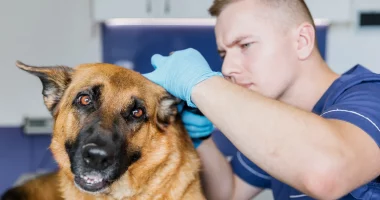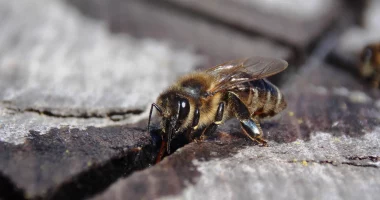Bartonellosis is caused by bacteria from the Bartonella genus. It is an infectious disease. These bacteria are usually transmitted to humans by vectors like sandflies, lice, or fleas. Bartonellosis can appear in various forms, with symptoms ranging from mild to severe. Common symptoms include fever, swollen lymph nodes, and extreme tiredness. In more serious cases, it can cause infections of the spleen, liver, heart, and nervous system. The disease is more prevalent in regions with poor sanitation and high vector existence, like parts of Africa, Southeast Asia, and South America.
There are many species of Bartonella that can affect humans, with the most common being Bartonella bacilliformis, Bartonella quintana, and Bartonella henselae. These bacteria are typically transmitted to humans through vectors like sandflies, lice, and fleas, as well as through direct contact with animals, especially cats.
Types
Cat Scratch Disease
It is caused by Bartonella henselae, CSD usually happens after a bite or scratch from an infected cat. Symptoms include swollen lymph nodes, fever, fatigue, and a pustule at the location of infection.
Trench Fever
It is caused by Bartonella quintana, this type of bartonellosis is extended by body lice. It was common among soldiers in World War I, hence the name. Symptoms include recurring headaches, fevers, bone pain, and rash, particularly in the shins.
Carrion’s Disease
It is caused by Bartonella bacilliformis, this disease is transmitted by sandflies and is endemic to particular regions of South America. It has two phases: an acute phase called Oroya fever, characterized by high fever and serious anemia, and a chronic phase called Verruga peruana, marked by skin inflammation.
Symptoms
Bartonellosis can manifest with various symptoms based on the species of Bartonella involved and the individual’s immune response. Frequent symptoms include fever, which can be persistent and accompanied by chills. Swollen lymph nodes, particularly around the site of infection or throughout the body, are typical, often presenting as sensitive or painful lumps. Extreme tiredness and malaise are also common, often lingering despite rest. Skin cuts may appear, ranging from small papules to larger, more noticeable eruptions, particularly in cases of Bartonella bacilliformis infection.
In more severe cases, bartonellosis can cause systemic complications. Neurological symptoms like confusion, headache, or even seizures may happen, especially if the infection extends to the central nervous system. Some individuals may develop eye-related signs, including neuroretinitis characterized by inflammation of the optic nerve. Additionally, in chronic cases or when left untreated, bartonellosis can lead to more severe conditions like endocarditis, an infection of the heart valves that can cause symptoms like breathing difficulties, chest pain, and heart murmurs. Early diagnosis and appropriate treatment are crucial to managing bartonellosis effectively and preventing these complications.
Diagnosis
The diagnosis bartonellosis involves a combination of clinical evaluation, laboratory tests, and sometimes imaging studies. The approach to diagnosis typically includes:
- Clinical Evaluation: A thorough assessment of the patient’s symptoms, medical history, and potential exposure to vectors or animals known to carry Bartonella bacteria.
- Serological Tests: Blood tests are frequently used to identify antibodies produced by the immune system in response to Bartonella infection. These examinations, like enzyme-linked immunosorbent assay or indirect immunofluorescence assay, can assist confirm the existence of antibodies particular to Bartonella species.
- Molecular Tests: Polymerase chain reaction assays may be utilized to identify and detect Bartonella DNA in blood, tissue samples, or other body fluids. PCR is particularly useful for confirming the existence of the bacteria and identifying the particular species causing the infection.
- Culture: Culturing Bartonella bacteria from tissue or blood samples can be challenging and is less commonly used in clinical practice due to the slow development of the bacteria and the requirement for specialized culture techniques.
- Imaging Studies: In cases where complications like endocarditis are suspected, imaging studies such as echocardiography may be performed to assess the structure and function of the heart valves.
Diagnosis of bartonellosis can be complex due to the diverse clinical manifestations and the varying sensitivity and specificity of diagnostic tests. It often needs collaboration between healthcare providers, microbiologists, and infectious disease specialists to accurately identify and manage the infection. Early diagnosis is crucial for initiating appropriate treatment and preventing complications associated with severe forms of the disease.
Treatment
The treatment of bartonellosis depends on the particular species of Bartonella causing the infection and the seriousness of symptoms. Commonly used antibiotics for treating bartonellosis include:
- Azithromycin: Another antibiotic frequently used, particularly for patients who cannot tolerate doxycycline. Azithromycin is effective against Bartonella species and is usually used when there are specific reasons to avoid doxycycline.
- Doxycycline: This antibiotic is often the first-line treatment for most forms of bartonellosis, including Bartonella henselae (causing cat scratch disease) and Bartonella quintana (causing trench fever). It is generally well-tolerated and effective in ruling out the bacteria.
- Rifampin: Sometimes used in combination with azithromycin and doxycycline, rifampin is particularly effective against Bartonella bacilliformis, the species causing Carrion’s disease, due to its ability to penetrate tissues well.
The time of treatment can vary based on the severity and kind of infection. For uncomplicated cases, antibiotics are usually prescribed for several weeks. In more severe cases, like those involving endocarditis or other complications, treatment may extend to several months.
Healthcare providers need to monitor the patient’s response to treatment and adjust therapy as required based on clinical improvement and laboratory findings. In cases of endocarditis or other complex infections, management may require consultation with infectious disease specialists and possibly surgical intervention for valve repair or replacement.
Early initiation of appropriate antibiotic therapy is crucial for reducing symptoms, preventing complications, and achieving complete recovery from bartonellosis. Regular follow-up visits are typically recommended to ensure that the infection has been successfully treated and to monitor for any signs of relapse or recurrence.
Prevention
Preventing bartonellosis involves several key measures: controlling fleas and lice on pets, especially cats, through regular grooming and the use of veterinary-approved flea control products; avoiding direct contact with stray or feral animals, particularly cats, that may carry Bartonella bacteria; practicing good hygiene, including thorough handwashing after handling animals or potentially contaminated materials; using insect repellents in areas where sandflies or body lice are prevalent; and wearing protective clothing to minimize exposure to vectors in endemic regions. Educating individuals, especially those at higher risk such as pet owners and healthcare workers, about the transmission routes and preventive measures can also help reduce the risk of contracting bartonellosis.
Summary
Bartonellosis, caused by various Bartonella species transmitted through vectors like sandflies fleas, and lice present with symptoms ranging from fever and swollen lymph nodes to severe complications like neuroretinitis and endocarditis. Diagnosis involves clinical evaluation, serological tests for antibodies, and molecular techniques like PCR for bacterial detection. Treatment typically includes antibiotics like azithromycin, doxycycline, or rifampin, tailored to the specific Bartonella species and severity of infection. Prevention strategies include controlling animal vectors, practicing good hygiene, using insect repellents in endemic areas, and educating at-risk populations about transmission risks. Early diagnosis and prompt treatment are crucial for managing bartonellosis effectively and preventing serious complications.









